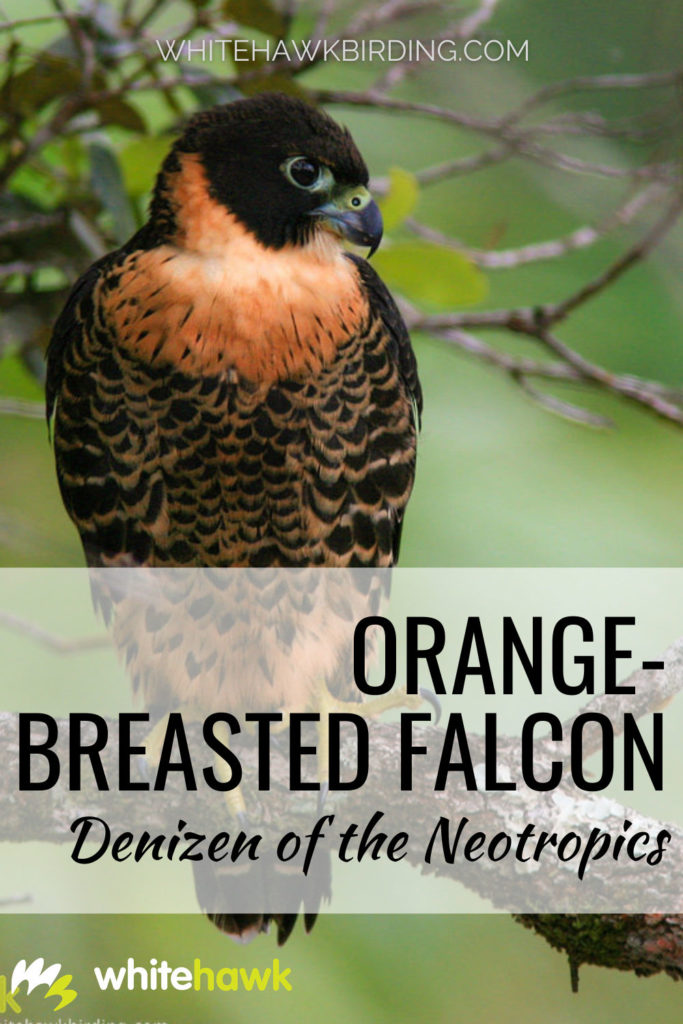When one thinks of falcons, perhaps the first bird to come to mind is the swift and stunning Peregrine Falcon. While a fascinating bird in its own right, for us, the quintessential falcon is none other than the Orange-breasted Falcon (OBF). It has impressively large feet, a bright orange breast, and incredible speed (though no tests have been done, it would not surprise us to learn that the OBF could beat a Peregrine in a race!). All of this and more, make it a fascinating species to study and an unforgettable sight to see.
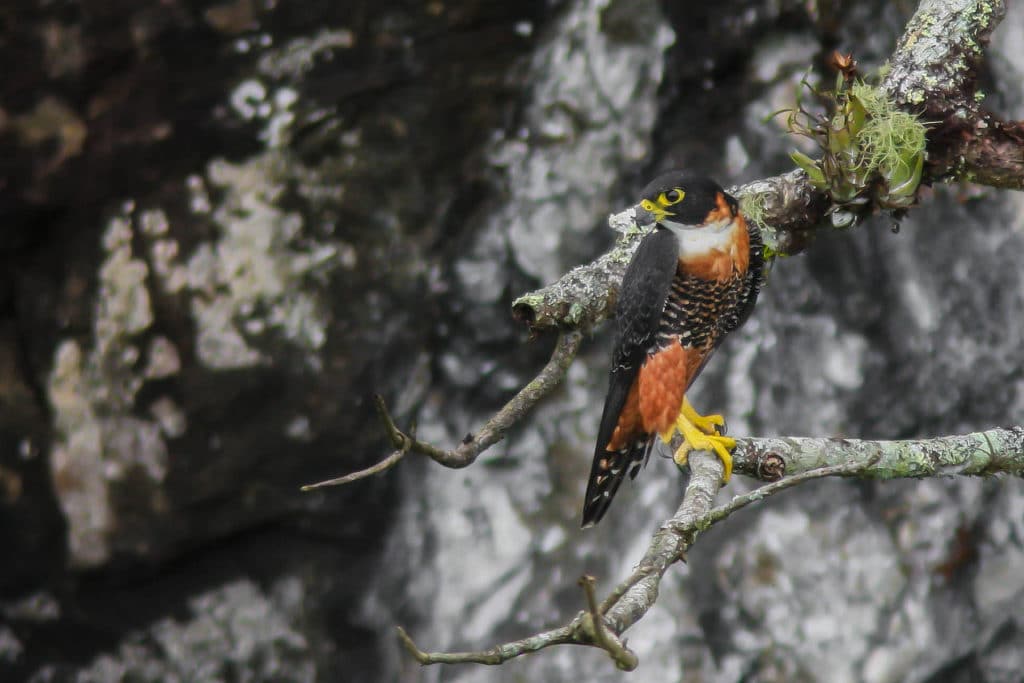
A Neotropical falcon: Natural History
This medium-sized falcon is a skilled hunter, and like other falcons, catches most of its prey on the wing. Small, flying insects such as butterflies and dragonflies, birds from swifts and swallows to parakeets and other songbirds, and bats are all part of an Orange-breasted Falcon’s diet.
These falcons can often be observed soaring and hunting over the rainforest and near large cliffs, which is where they most often nest. Though a few reports exist of Orange-breasted Falcons nesting in epiphytes or tree cavities, these stunning falcons most often nest on cliff ledges and crevices. They normally lay between 1-3 eggs. Like most falcon species, Orange-breasted Falcons don’t build their own nests. Instead, they lay their eggs directly on the substrate of the ledge or tree cavity, after sometimes scraping a small depression in which to lay them.
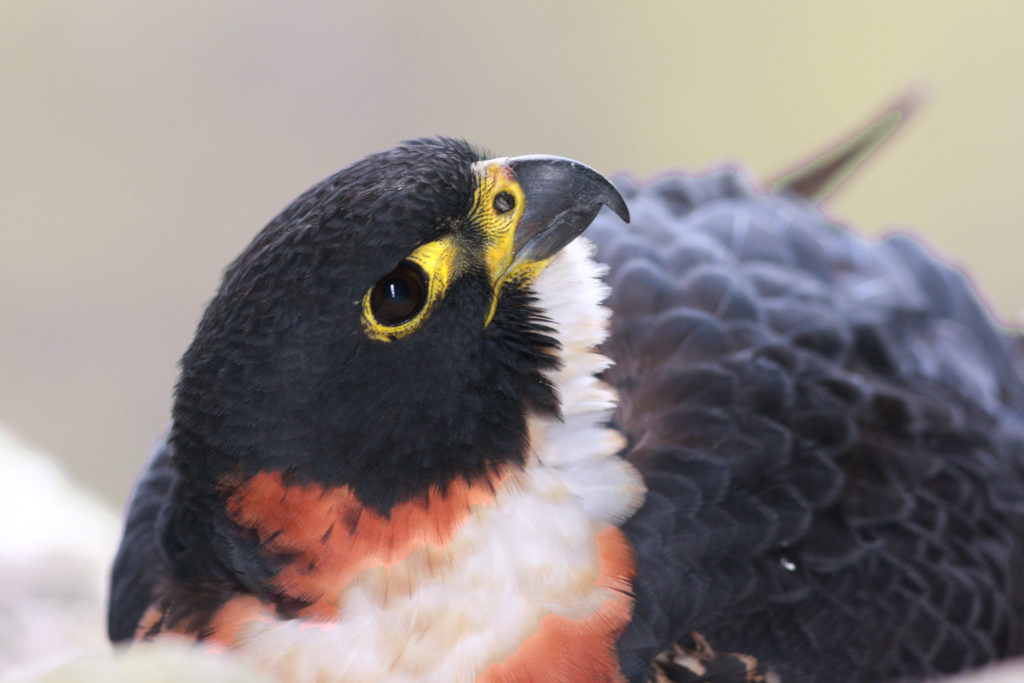
Where to see the Orange-breasted Falcon in Central America
Belize and Guatemala are, without a doubt, the best places to see this falcon in action. In Guatemala, of course, Tikal National Park is the place for some of the most reliable sightings. A pair tends to nest on the temples each year. Listen for the loud, piercing call to guide you to them. In Belize, there are a few places to see them. The 1000-Foot Falls and the Hidden Valley Inn property are some of the most accessible ones. Hidden Valley Inn has supported conservation efforts for this falcon for over two decades. It is a place where you can comfortably stay while looking for OBFs or many other bird species unique to this area.
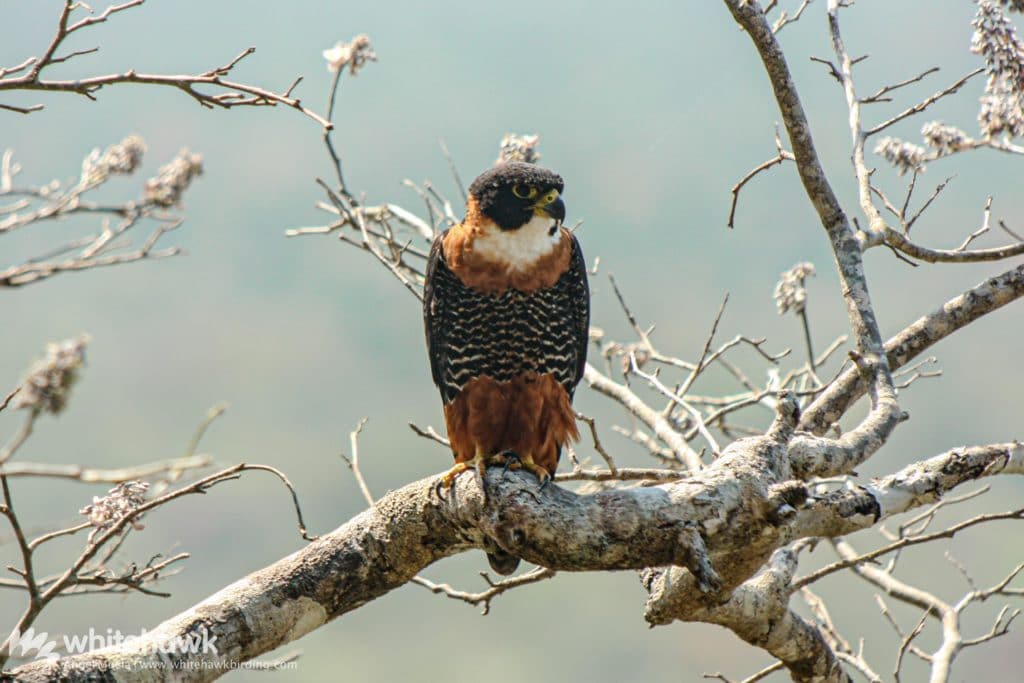
Status and Conservation
The IUCN lists this species as Near Threatened globally. However, scientists believe that this bird has disappeared or is extremely rare in many countries across its historic range. This is particularly true in Central America, where Belize, Guatemala, and Panama are the only countries with recent, reliable sightings. Recent studies suggest that the Central American population from Belize and Guatemala is isolated from the one in Panama and South America. In South America, there are reports from several different countries. Although the species has a wide distribution there, the sightings are, nonetheless, scarce.
The Peregrine Fund has been studying this falcon for more than three decades. Since 2005 it has implemented a captive breeding and release program in Belize that aims to supply the local population with a few more individuals and new genes.
Vampire Bats and Orange-breasted Falcons
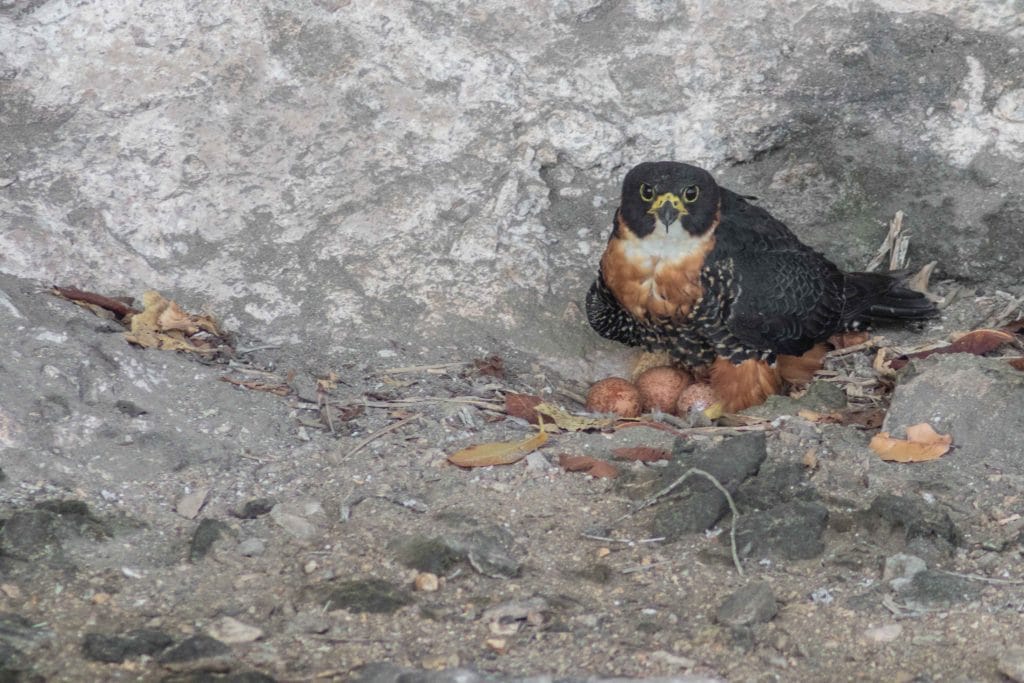
From 2001-2010, some members of the Whitehawk team worked with The Peregrine Fund to study and conserve the Orange-breasted Falcon in Panama, Belize, and Guatemala. During this time, we placed a few cameras at different nests in an attempt to better understand their breeding behavior, their diet, and potential threats. Unfortunately, the remote locations and the limited technology at the time proved very challenging and we were only able to collect bits and pieces of information. One of those cameras, however, revealed something that we were not anticipating. We had installed it in an active nest at one of the temples in Guatemala’s most famous Mayan ruins, Tikal. Thanks to the camera’s infrared night vision, we discovered that vampire bats, known for feeding on cattle and sometimes farm chickens, spent time feeding on the unsuspecting incubating female. You can read more details about this surprising discovery in this paper.
ID Challenge: Orange-breasted Falcon vs. Bat Falcon
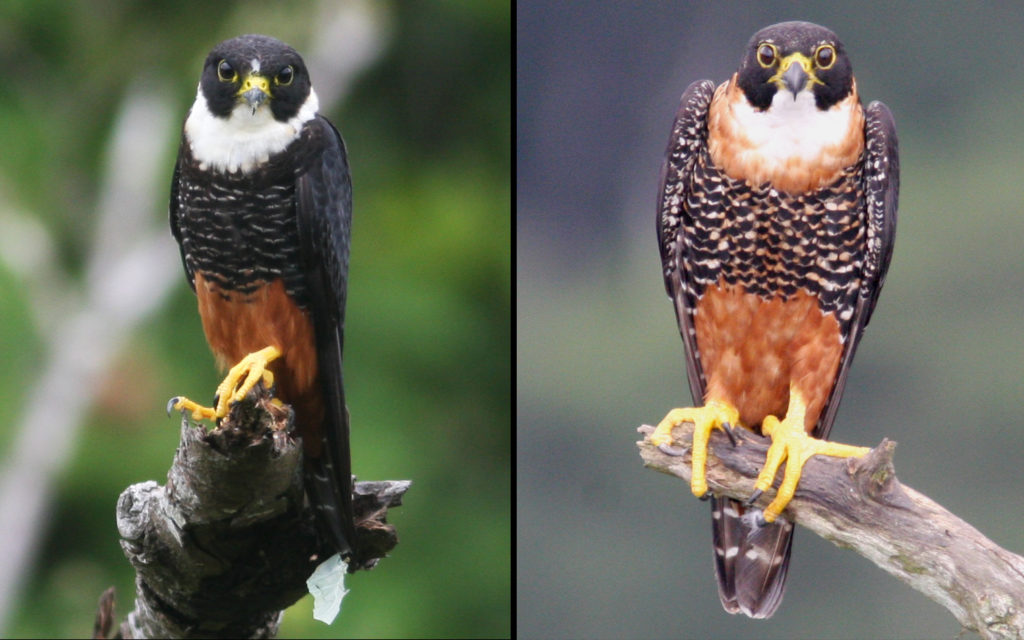
The Bat Falcon has a wide distribution. We can find it throughout the Neotropics, oftentimes close to urban areas. This little falcon closely resembles the larger and more scarce Orange-breasted Falcon. Size is a great way to tell them apart. But, it isn’t always very reliable, especially if the bird is in flight or far away. One could easily mistake a big female Bat Falcon for a small male Orange-breasted Falcon. Even when conditions are perfect, it can be hard to tell these species apart.
The orange bib that gives the larger Orange-breasted Falcon its name is also not a definitive characteristic for telling the two species apart. Some Bat Falcons show an orange stripe on their throat, while some Orange-breasted Falcons lack the orange color in their chest. In fact, the scientific name of the Orange-breasted Falcon was coined because of their white throat (from the Greek, deirē, throat, and leukos, white), rather than their orange breast.
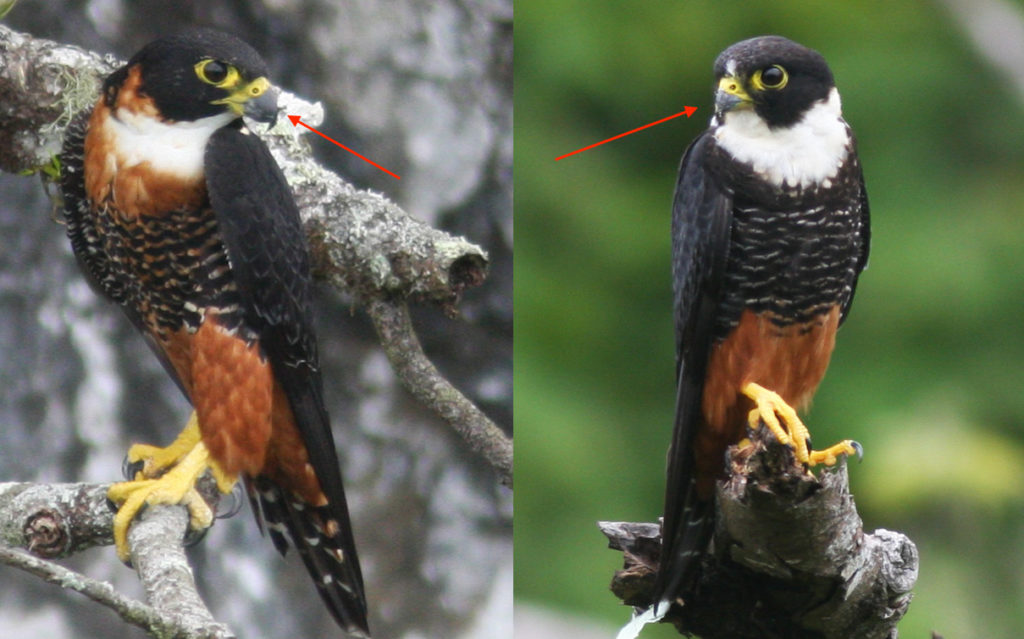
One way to unmistakably tell these species apart is to look at the size of their feet and/or their beaks. Bat Falcons feed on small prey like insects, small birds, and small bats. Their feet and beaks are, therefore, adapted to dispatch small prey items and do not need to be particularly big. The Orange-breasted Falcon, on the other hand, can hunt much larger prey, like parrots, parakeets, and pigeons. Their feet and beaks are, therefore, bigger and stronger.
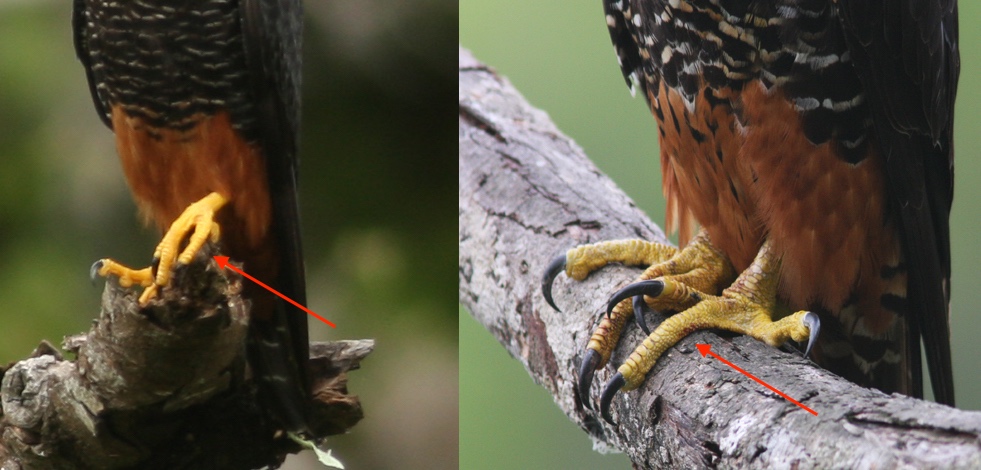
In addition to these visual identification features, we can also use their vocalizations to tell these birds apart. The Bat Falcon has a high-pitched rapid call, much like that of a kestrel. The Orange-breasted Falcon, on the other hand, has a harsh, rapid, and loud “kek-kek-kek-kek,” slightly deeper in tone.
Join us in the search for Orange-breasted Falcons!
We’re fascinated with Orange-breasted Falcons! Hopefully, this article will help you understand why. Feel free to contact us if you have any questions about this incredible species. We also offer tours to Belize that include stops in known OBF habitats, including the incredible Mountain Pine Ridge region. We can help you add this spectacular bird to your life list!

